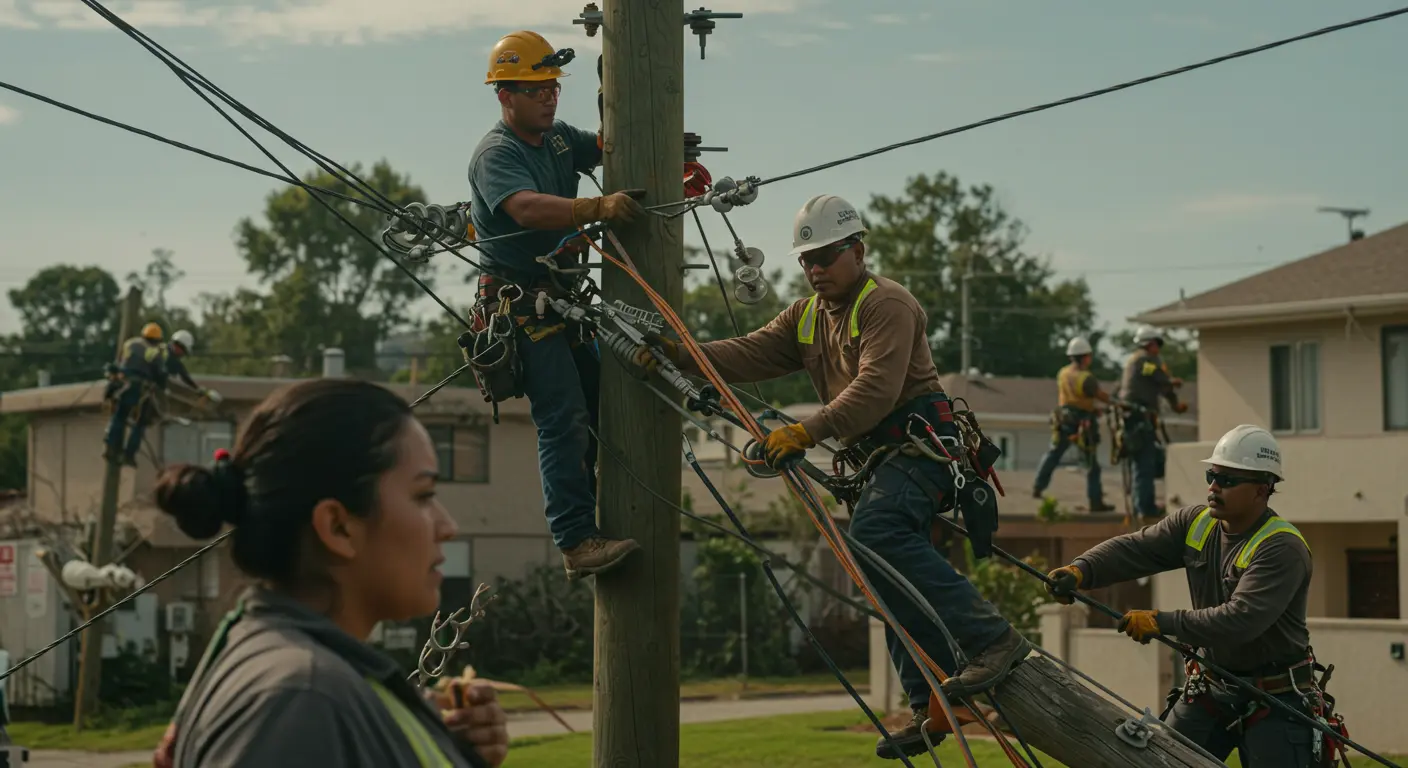When disasters strike, whether they’re natural occurrences like hurricanes or artificial events, communities are often left facing an aftermath of disarray and disruption. Essential utilities such as electricity, water, and communication systems can be severely impacted, leaving residents needing restoration to ensure safety and return to daily life. The rapid restoration of utilities brings physical services back online and plays a vital role in affected areas’ emotional and economic recovery. This article delves into the critical function of utility restoration and its contribution to speeding up community recovery.
The Role Of Utility Restoration In Recovery
Utility restoration is a cornerstone of community recovery following disasters. The process involves repairing and reactivating essential infrastructure all necessary for maintaining living standards and public safety. For instance, restoring power enables homes, hospitals, and business to function while reestablishing water services, which ensures sanitation and access to clean drinking sources. Utility restoration is the backbone of post-disaster recovery, enabling other relief efforts to proceed more smoothly and effectively.
Rapid restoration efforts are key to minimizing the negative impacts on communities. Utility teams can lay the groundwork for broader recovery by focusing on the critical infrastructure first. Efficient utility restoration also aids in reducing long-term economic losses, allowing businesses to resume operations more quickly and stabilizing local economies. To learn more about effective storm recovery services, visit this website.
Key Elements Of Effective Utility Restoration
Successful utility restoration hinges on several essential components: planning, infrastructure resilience, skilled personnel, and resources. Adequate pre-disaster planning can significantly reduce downtime by familiarizing restoration teams with local infrastructure and potential vulnerabilities. Incorporating resilience into infrastructure design ensures that systems can withstand or quickly recover from severe conditions.
Skilled personnel, well-versed in the local landscape and restoration technologies, are indispensable for swift and proficient repairs. Access to reliable resources—such as spare parts and repair equipment is equally vital, ensuring restoration teams can act immediately and efficiently. A well-coordinated response strategy can significantly expedite utility restoration efforts, aiding communities in their recovery journey.
Importance Of Timely Recovery
The speed at which utilities are restored after a disaster directly affects a community’s overall recovery timeline. Timely utility restoration is critical in preventing secondary disasters or hazards, such as fires and floods, that can occur when systems are left neglected. Communities with delayed utility recoveries often face prolonged displacements and higher economic decline rates.
Timely utility restoration boosts community morale and promotes resilience by enabling residents to resume normal activities sooner, fostering trust in local authorities and emergency services. Furthermore, quicker recoveries can alleviate the need for prolonged humanitarian aid, allocating more resources to rebuilding efforts and long-term sustainability initiatives.
Collaboration And Community Involvement
Collaboration between utility companies, local authorities, and communities is invaluable in efficient utility restoration. When these entities work together, sharing information and resources, they can speed up recovery and ensure resources are applied where they are most needed. Pre-established partnerships can be a critical advantage, allowing for seamless coordination when disaster strikes.
Community involvement is equally important. By engaging residents in preparedness and response initiatives, utility companies can create a network of informed citizens ready to assist in minor local restoration efforts, such as clearing debris or reporting outages promptly. Educating communities about utility systems and their role in recovery can lead to more resilient and sustainable recovery processes, supporting quicker community-wide resilience.
The Role Of Technology In Utility Restoration
Technological advancements have significantly enhanced the capabilities of utility restoration teams. Tools like automated outage mapping and GPS tracking have made real-time coordination and repair deployment more efficient. These technologies cut down response times and increase the precision of restoration efforts, ensuring that the most affected areas receive attention first.
Additionally, integrating innovative grid technologies enables utility companies to detect and isolate problems more quickly, often restoring services remotely without needing immediate on-site repairs. Investing in such technology supports immediate restoration efforts and fortifies infrastructure for greater resilience against future events, contributing to overall community sustainability.
Conclusion
Utility restoration is a pivotal aspect of effective disaster recovery, crucial in helping communities rebuild and thrive post-disaster. With the right mix of planning, resources, collaboration, and technology, utility restoration efforts can bring about faster and more efficient recovery processes that restore normalcy and foster resilience. By prioritizing utility restoration, communities can significantly enhance their readiness for future challenges, developing a foundation for sustainable growth and stability.

